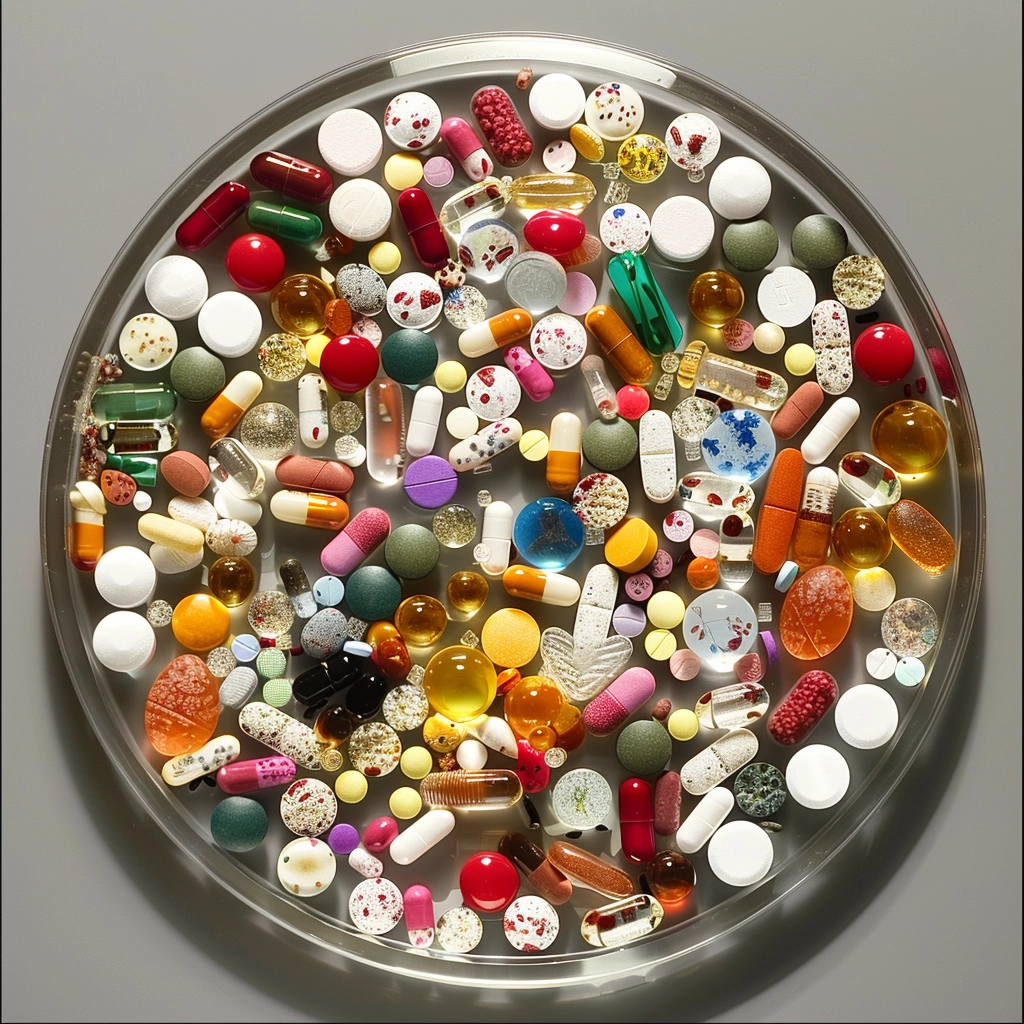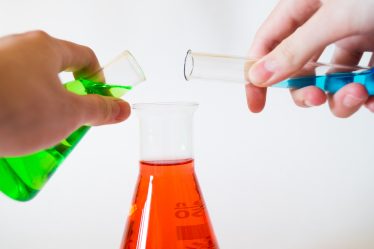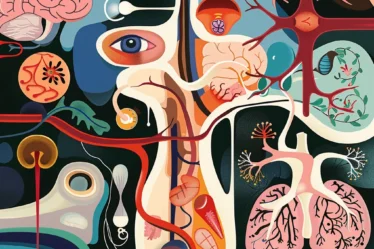
Antibiotics are essential medicines used to treat infections caused by bacteria. By either killing bacteria or stopping their reproduction, antibiotics help the body overcome infections.
Antibiotics, introduced to medicine in the 20th century, have significantly reduced deaths from diseases like tuberculosis and pneumonia. However, they are ineffective against common cold or flu viruses. Therefore, we must use antibiotics correctly.
We will delve into the types of antibiotics, how they target bacteria, how we categorize and name them, and how to use them.
Read our top free study guides on biodiversity and fungi.
Antibiotics and Resistance: Key Takeaways
In a hurry? Don’t worry. Our critical takeaways on antibiotics will give you a quick and easy summary of the main points:
🟠 Antibiotics are antimicrobial substances used to treat or prevent bacterial infections, including broad-spectrum and narrow-spectrum targeting different bacteria.
🟠 Misuse and overuse of antibiotics lead to resistance, making infections more challenging to treat and increasing the risk of “superbugs.”
If you find antibiotics challenging, don’t worry! Personalized tutoring or interactive biology lessons make these concepts more straightforward. Explore more biology topics and broaden your knowledge with our free Biology blogs.
What Are Antibiotics and How Do They Work?
Antibiotics are antimicrobial substances designed to fight infections by targeting bacteria. They form a critical part of our medical arsenal, used to treat and prevent bacterial infections in some cases. The way antibiotics work, we can categorize them into two main groups: bactericidal antibiotics, which kill bacteria, and bacteriostatic antibiotics, which stop bacteria from multiplying.
When you take an antibiotic, it seeks out the bacteria causing the infection. Bactericidal antibiotics, such as penicillin, attack the bacterial cell wall, ultimately causing the bacteria to burst and die. On the other hand, bacteriostatic antibiotics, like tetracycline, prevent bacteria from growing and reproducing by interfering with protein production, which is vital for bacteria’s survival and multiplication.
Simplified list of common antibiotics and their actions:
- Penicillin – Kills bacteria by disrupting their cell walls.
- Tetracycline – Stops bacteria from growing by preventing protein synthesis.
- Erythromycin – Inhibits bacteria’s ability to produce essential proteins.
- Ciprofloxacin – Kills bacteria by damaging their DNA.
Antibiotics are specific in their action; they target bacterial processes and structures not found in human cells, which minimizes harm to the host’s body while effectively treating the infection. However, antibiotics are not a cure-all and are ineffective against viral infections, such as the flu or the common cold. We must understand the correct use of antibiotics to maximize their benefits and minimize the risk of antibiotic resistance.
Finding antibiotics and their mechanism of action challenging? A biology tutor can offer personalized lessons that cater to your learning style, making complex biological processes accessible and engaging.
The Discovery and Evolution of Antibiotics
Before modern medical practices, ancient civilizations used molds and plant extracts to combat infections. These early practices paved the way for a monumental breakthrough in medical history.
In 1928, Alexander Fleming made a serendipitous discovery that introduced the world to the antibiotic era. Fleming observed that a mold, Penicillium notatum, had infiltrated a petri dish in his lab and killed the bacteria present. Discovery led to the development of penicillin, the first antibiotic, revolutionizing the treatment of bacterial infections.
The triumph of penicillin ignited a golden era in antibiotic discovery throughout the mid-20th century, uncovering other antibiotics like streptomycin, tetracycline, and erythromycin. These discoveries significantly lowered mortality rates from various bacterial infections and facilitated advancements in surgery and cancer treatments by effectively managing infections.
Responding to the challenge of bacterial resistance, the latter half of the 20th century saw the synthesis of new antibiotics. Researchers designed these new drugs to outsmart resistant bacteria and broaden the spectrum of bacterial targets.
Today, the evolution of antibiotics serves as a testament to human ingenuity in medicine and highlights the continuous struggle against bacterial infections and resistance. This journey from ancient remedies to today’s synthetic antibiotics emphasizes the indispensable role of antibiotics in healthcare and the ongoing imperative for innovation.
Are you curious about chemistry in daily life? Explore our simple experiments you can do at home!
Types and Classes of Antibiotics
Broad-spectrum vs. Narrow-Spectrum Antibiotics
Antibiotics fall into two main categories: broad-spectrum and narrow-spectrum:
Broad-spectrum antibiotics, such as amoxicillin, can target a wide range of bacteria, making them useful in situations where the specific cause of an infection is unknown. They’re often the first line of defense in serious infections to control the spread quickly. However, their widespread use can inadvertently affect beneficial bacteria in the body and contribute to the development of antibiotic resistance.
In contrast, narrow-spectrum antibiotics, like penicillin, target a specific type or group of bacteria. They are the preferred choice when the cause of an infection is known because they minimize harm to the body’s beneficial bacteria and reduce the risk of developing antibiotic resistance. Narrow-spectrum antibiotics help treat infections caused by sensitive bacteria, ensuring a more targeted and effective treatment.
Key Antibiotic Classes and Their Targets
We also categorize antibiotics into several classes based on their mechanism of action and chemical structure. Here are some key antibiotic classes:
- Penicillins (e.g., penicillin, amoxicillin): Kill bacteria by interfering with the bacterial cell wall synthesis.
- Cephalosporins (e.g., ceftriaxone, cephalexin): Similar to penicillins, these drugs disrupt the construction of the bacterial cell wall but are often used when patients are allergic to penicillins.
- Macrolides (e.g., erythromycin, azithromycin): Inhibit protein synthesis in bacteria, preventing them from growing or multiplying.
- Quinolones (e.g., ciprofloxacin, levofloxacin): Interfere with DNA replication and cell division in bacteria.
- Tetracyclines (e.g., tetracycline, doxycycline): Block the attachment of tRNA to the ribosome, stopping protein synthesis.
- Aminoglycosides (e.g., gentamicin, tobramycin): Inhibit bacterial protein synthesis by binding to the bacterial ribosome, effective against aerobic gram-negative bacteria.
Each class of antibiotics has a unique target and mechanism, making them effective against specific types of bacterial infections. Understanding these classes helps healthcare professionals choose the most appropriate antibiotic for each infection, optimizing treatment outcomes while minimizing side effects and resistance.
Explore biochemistry and the differences between organic and inorganic chemistry.
The Correct Application of Antibiotics
Antibiotics play a critical role in treating bacterial infections and, to a lesser extent, some protozoan infections. They do not cure viral infections like the common cold or flu. Healthcare providers prescribe antibiotics based on the type of infection and the bacteria (or protozoa) responsible. The choice of antibiotic, its dose, and the duration of treatment depend on the infection’s severity and the patient’s health status.
There are several routes through which antibiotics can be administered, including:
- Oral (by mouth): This is the most common route, used when the infection is less severe or as a follow-up treatment after an initial intravenous dose.
- Intravenous (IV): For severe infections, antibiotics are directly delivered into the bloodstream to ensure rapid and complete absorption.
- Topical: Applied to the skin through creams or ointments for localized infections.
- Intramuscular (IM): This is an injection into a muscle. It is used less frequently but can be an option for certain infections.
Risks of Antibiotics Without Prescription
Using antibiotics without a prescription carries significant risks, including developing antibiotic-resistant bacteria. Misuse can lead to antibiotics being ineffective when genuinely needed. Additionally, incorrect usage, such as the wrong dosage or antibiotic type, can worsen the infection or cause severe side effects. It’s imperative to use antibiotics only when prescribed by a healthcare professional diagnosed with a bacterial or protozoan infection.
When Does an Antibiotic Start Working?
The effectiveness of antibiotics and the time they take to work vary based on the type of antibiotic and the infection being treated. Some antibiotics start to fight the infection within a few hours, while others might take a few days to show noticeable effects. Factors influencing the timeline include the infection’s location, the bacteria’s growth rate, and the antibiotic’s mechanism of action. Patients must complete the entire course of antibiotics, even if they start feeling better. That way, we can eradicate the infection and prevent resistance development.
Read our top free study guide on mitosis and meiosis.
Antibiotic Resistance and Misuse of Antibiotics
Antibiotic resistance arises when bacteria evolve and become immune to the effects of antibiotics. This situation primarily results from two factors: misuse and overuse of antibiotics. Misuse occurs when antibiotics are taken incorrectly, such as not completing a prescribed course or using them for viral infections like the flu, which antibiotics cannot treat. Overuse includes unnecessary prescriptions for antibiotics or their extensive application in livestock for growth promotion, which exposes more bacteria to these drugs, increasing the chance of resistance.
The repercussions of antibiotic resistance are significant. Infections become more challenging to treat, leading to extended hospital stays, increased healthcare costs, and greater mortality rates. The development of “superbugs,” bacteria resistant to multiple antibiotics, represents a critical threat to global health.
To address this, we must use antibiotics responsibly: only under prescription and precisely as directed. Efforts to curb resistance include improving prescription practices, developing new antibiotics, and finding alternative treatments.
Read our top free study guide on homeostasis.
How to Learn the Different Types of Antibiotics Through Tutoring
We’ve covered antibiotics, their types, and how they work, including the issue of resistance. To further understand, tutoring can help. Biology tutors offer lessons that are tailored to your pace. With classes or a private teacher, mastering antibiotics and their careful use becomes achievable.
If you’re searching for a biology tutor, a quick search for “biology tutor Liverpool” or “biology teacher Birmingham” on platforms like meet’n’learn can connect you with the ideal private teacher for your educational journey.
Those preferring group learning settings can find biology classes in their area by looking up “biology classes Leeds” or “biology lessons London” online, leading to community colleges or educational workshops.
Antibiotics and Antibiotic Resistance: Frequently Asked Questions
1. What are antibiotics?
Antibiotics are medicines designed to fight infections caused by bacteria, either by killing them or preventing their growth.
2. Can I use an antibiotic without a prescription?
Using antibiotics without a prescription is not recommended as it can lead to misuse and increase the risk of antibiotic resistance.
3. What are some common names of antibiotics?
Common names include penicillin, amoxicillin, ciprofloxacin, and erythromycin.
4. When does an antibiotic start working?
Antibiotics can start working within a few hours, but depending on the infection and the drug, visible effects might take longer.
5. How do antibiotics work?
Antibiotics target specific bacteria features, killing them directly or preventing their reproduction.
6. What are the types of antibiotics?
Types include broad-spectrum and narrow-spectrum antibiotics and classes like penicillins, cephalosporins, and macrolides.
7. Can antibiotics treat viral infections?
Antibiotics are ineffective against viruses and are only used to treat bacterial infections.
8. What is the difference between broad-spectrum and narrow-spectrum antibiotics?
Broad-spectrum antibiotics target a wide range of bacteria, while narrow-spectrum antibiotics focus on specific types of bacteria.
References:
1. ThoughtCO
2. Medical News Today
3. Wikipedia



